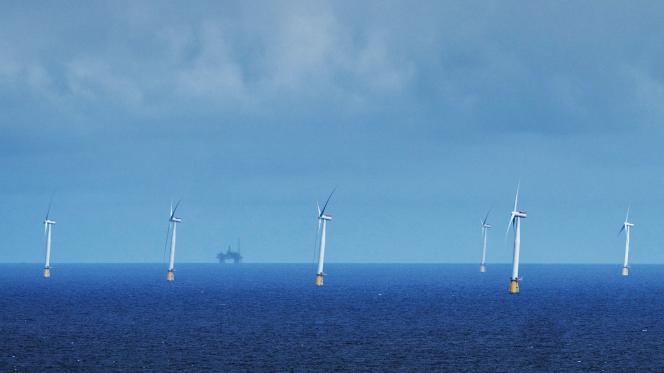VSThis is the age of all promises and all disappointments. The crisis of adolescence also affects businesses. The renewable energy sector has entered this thankless age. The Danish group Orsted is the world champion in offshore wind power. He carpeted the North Sea with his increasingly gigantic mills.
But, Wednesday August 30, this great connoisseur of the Scottish coasts took a nice cold shower. He announced that he had to write down more than 2.1 billion euros of assets from his accounts, which will have major repercussions on his financial results. Immediately, the company’s stock price collapsed by a quarter of its value. The explanations put forward by Orsted sum up well the reasons for the deep crisis that this sector, which is emerging from childhood, is going through: production costs, interest rates and prices.
In ten years, the costs of offshore wind have collapsed by 60%. With its gigantic blades and tall masts like skyscrapers, this electricity production technique has suddenly become competitive with gas, coal or nuclear. But the return of inflation, particularly in steel and copper prices, and logistical problems put a stop to this rise.
Production costs are soaring
In one year, production costs have gone up by 40%. To this sudden heaviness was added the sudden rise in interest rates, which is very penalizing in such a capital-intensive business. The long-term electricity purchase prices offered by the States in exchange for the investment continued to fall. This situation makes operators highly dependent on subsidies. Part of Orsted’s disappointment stems from a reduction in the expected subsidy for setting up its field off the North American coast.
If the analysts castigate the poor assessment of Orsted, the latter is not the only one to revise its ambitions downwards. Its Swedish neighbor Vattenfall announced in July the end of its project off the English coast. Profitability was no longer there. Bad news for the States which will have to put their hands in their pockets to achieve the objective of multiplying by twenty the world capacity by 2050 as suggested by the International Energy Agency.
It is also a counter-model for the oil companies which are being pushed to change professions and which see Orsted, a former gas and oil company in the Danish kingdom, successfully converted into wind power for ten years, suffering its first big storm.
